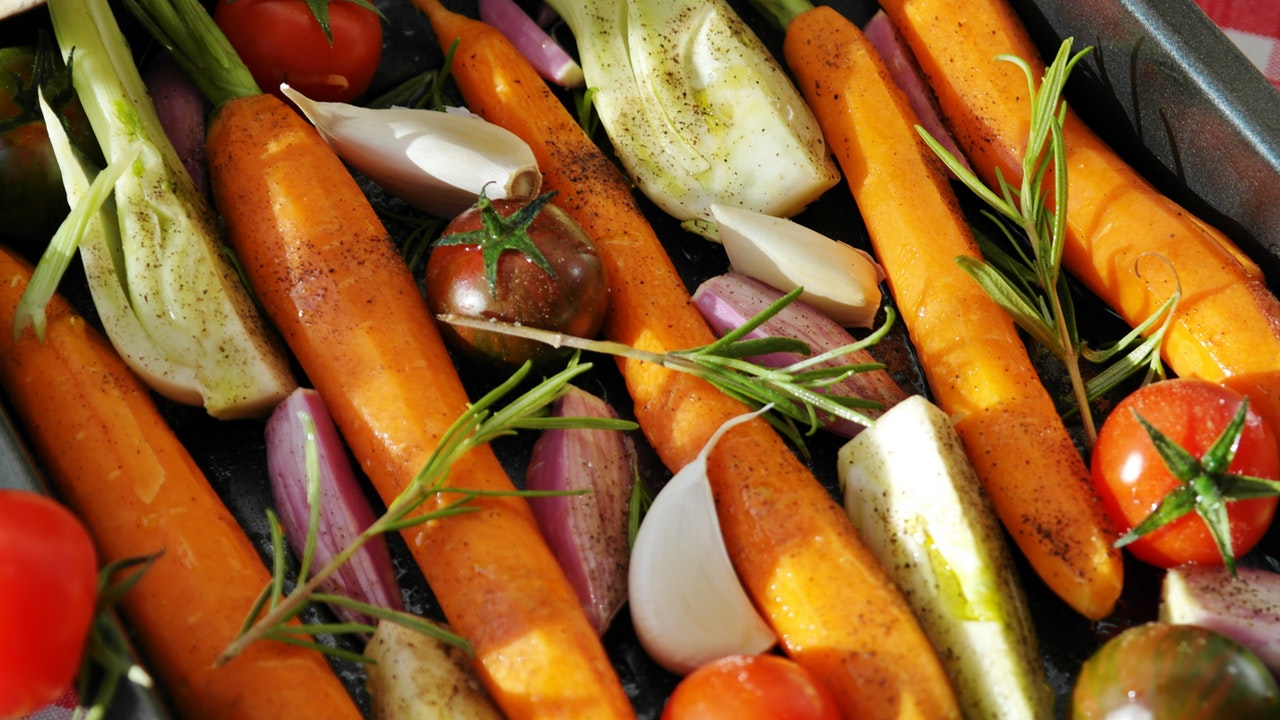Some of us absolutely love vegetables, and some of us struggle to get more of them into our diets, but no matter which camp you fall into, when you are incorporating veggies into your meals it makes sense to try and get as much nutrition out of them as possible.
Levels of fat-soluble vitamins such as A, D, E and K in vegetables are much better retained during the cooking process than those that are water-soluble, such as C and B, while mineral levels are largely unaffected. Though that may sound reasonably simple, in reality it’s often much more complicated, as cooking can both increase or decrease the nutritional benefits of vegetables, depending on which one we are referring to. As a general rule, cooking that minimises temperature, time, and liquid, will maximise the amount of nutrients in our cooked veg, but let’s look at this in more detail:
- Boiling is the most intensive cooking method that tends to result in the greatest loss of nutrients. However, boiling is just as destructive to anti-nutrients such as goitrogens, a group of chemicals often found on broccoli and kale that aren’t dangerous to most humans, but can make an existing thyroid condition worse. In some cases, boiling can even increase the nutrient content, such as in carrots, which have more antioxidants present after boiling than they do raw. Overall, boiling veg and then draining the water reduces nutrient content by around 10-25% on average, though cooking vegetables for soups or stews where the water remains isn’t a problem.
- Frying vegetables, for example in a stir fry, is a great way to make fat-soluble vitamins easier to absorb. There typically isn’t any water to drain, so the only vitamins affected are those that break down in heat – C and B. However, frying typically takes a short amount of time, so this isn’t often a problem either. The bigger concern with frying is the use of unhealthy fats and oils, so dry-fry where you can, or use a healthier alternative such as coconut oil or low calorie cooking spray. Roasting is another method that does not require water, which is good news for those who love a baked potato, or roasted carrot and parsnip.
- Slow-cookers have become very popular in recent years, and is a very gentle method of cooking on a low heat for a longer period of time. The low heat is good news for veggie nutrients, and it’s even better if the water from the cooking process is kept in the dish, such as a casserole. To maximise on nutrient content when using a slow-cooker, add the vegetables later in the day giving them just enough time to cook, as opposed to putting them in with the meat at the beginning of the cooking process.
- For a long time, steaming has been considered the best way to cook vegetables to retain the most nutrients, but has this proven to be true? It’s a low fat cooking method, that is gentle, and doesn’t involve water loss, but as there is no added fat, fat-soluble vitamins aren’t as available to you for absorption. This isn’t usually a problem, because people tend to eat steamed veg with some form of meat. However, if you are vegetarian or vegan, you should consider tossing steamed veg in some olive or coconut oil to maximise on the good stuff.
- Modern foodies tend to shun the humble microwave. However, it allows for shorter cooking times, and a study in 2009 in the Journal of Food Science has shown that microwaving is one of the best methods for consistently preserving antioxidant levels across all of the vegetables tested. Microwaving is also commonly used for frozen veg, which are usually picked at their peak of freshness, potentially having more vitamins and minerals than their counterparts to begin with.
So, did this post answer all of your burning questions about which cooking method helps retain the most nutrients? Possibly not. All cooking methods have positives and negatives depending on which vegetable is being prepares. What’s important is that you eat a variety of veggies, include a mixture of cooked and raw veg in your diet, and importantly cook them the way you enjoy eating them most – so that there is a plentiful supply with your meals.

The best way I like my Vegetable’s is to roast them in the oven. The keep their flavor and are wonderful to eat.